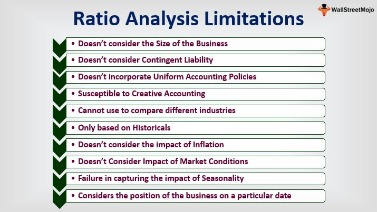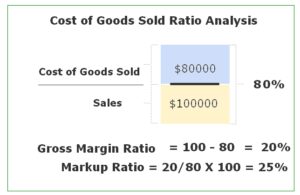November 25, 2022
Vertical Analysis: Definition, How It Works, and ExampleDiscounted Cash Flow DCF Valuation: The Basics
As you will see, the present value of equal cash flow payments is being reduced over time, as the effect of discounting impacts the cash flows. For business valuation purposes, the discount rate is typically a firm’s Weighted Average Cost of Capital (WACC). Investors use WACC because it represents the required rate of return that investors expect from investing in the company. NPV is simply a mathematical technique for translating each of these projected annual cash flow amounts into today-equivalent amounts so that each year’s projected cash flows can be summed up in comparable, current-dollar amounts.

Its projections can be tweaked to provide different results for various what if scenarios. This can help users account for different projections that might be possible. The articles and research support materials available on this site are educational and are not intended to be investment or tax advice.
Reconciling the Two Methods
Since a DCF analysis involves only the cash inflows from a company’s operations, Present Value and Net Present Value are equivalent. The key is to be diligent when making the assumptions needed to derive these projections, and where uncertain, use valuation technique guidelines to guide your thinking (some examples of this are discussed later in the chapter). It is very easy to increase or decrease the valuation from a DCF substantially by changing the assumptions, which is why it is so important to be thoughtful when specifying the inputs.

However, these estimates can be flawed and may not reflect the true value of the company because they are based on assumptions. The terminal value is usually estimated using a multiple of earnings or cash flow. In particular, the DCF model can be used to evaluate whether a proposed investment is likely to generate sufficient returns. The model can be used to value a company as a whole, or it can be used to value specific assets such as patents or real estate. This is due to the time value of money, which states that a dollar today is worth more than a dollar in the future because the dollar can be invested and will grow over time.
Steps in the DCF Analysis
If the amount to be paid at time 0 (now) for all the future cash flows is known, then that amount can be substituted for DPV and the equation can be solved for r, that is the internal rate of return. Two, select a discount rate, typically based on the cost of financing the investment or the opportunity cost presented by alternative investments. Three, discount the forecasted cash flows back to the present day, using a financial calculator, a spreadsheet, or a manual calculation. This article breaks down the discounted cash flow DCF formula into simple terms. We will take you through the calculation step by step so you can easily calculate it on your own. The DCF formula is required in financial modeling to determine the value of a business when building a DCF model in Excel.
All the above assumes that the interest rate remains constant throughout the whole period. To learn more about the various types of cash flow, please read CFI’s cash flow guide. Finance Strategists is a leading financial literacy non-profit organization priding itself on providing accurate https://kelleysbookkeeping.com/how-to-file-irs-form-8832/ and reliable financial information to millions of readers each year. At Finance Strategists, we partner with financial experts to ensure the accuracy of our financial content. For each additional increment of risk incurred, the expected return should proportionately increase.
DCF Steps
It represents the value an investor would be willing to pay for an investment, given a required rate of return on their investment (the discount rate). The Perpetuity Method uses the assumption that the Free Cash Flows grow at a constant rate in perpetuity over the given time period. You should use a conservative approach when estimating growth rates in perpetuity.
The formula for Discounted Cash Flow (DCF) is the sum of all future cash flows, actualized to the present value using a discount rate. In order to calculate the present value of future cashflows, the DCF tries to actualize all the future cashflows to their present value, assuming a certain rate of return. The present value of the security is then the sum of all the future cash flows actualized to their present value. You have a discount rate of 10% and an investment opportunity that would produce $100 per year for the following three years. Your goal is to calculate the value today—the present value—of this stream of future cash flows.
For instance, one financial analyst may estimate a 10-year lifespan for terminal value, while another may use 20 years.Many financial analysts and fund managers take a further step in the discounting process. They use a higher growth rate for the company in its early years, followed by a lower rate for the terminal-value years. This makes the discounted cash flow analysis more sophisticated, but also more complex and potentially tricky, because it uses two different rates. The main purpose of discounted cash flow is to determine a theoretical value or price for an asset, such as an appropriate stock price for a company. Comparing the discounted cash flows a business generates against the stock price can help an investor assess whether the company is undervalued or overvalued.
Is DCF the same as NPV?
The difference between discounted cash flow and net present value is that net present value (NPV) subtracts the initial cash investment, but DCF doesn't. Discounted cash flow models may produce incorrect valuation results if forecast cash flows or the risk rate are inaccurate.
The reason is that it becomes hard to make reliable estimates of how a business will perform that far out into the future. Note that there are formulas to determine the equivalent multiples and growth rates for the two given methods. In this formula, the PV is equal to the FCF in each year (Year 1, Year 2, Year 3, etc.), divided by a discount factor. In each case, the discount factor is 1 + the discount rate (r), taken to the nth power, where n is the number of years into the future that the Cash flow is occurring (similar to the compounding of an annual interest rate). In effect, UFCF allows the analyst to separate the Cash flows produced by the business from the structure of the ownership and liabilities of the business.
You calculate an investment’s NPV by subtracting the initial investment from the sum of the investment’s discounted cash flows. This formula assumes that all cash flows received are spread over equal time periods, whether years, quarters, months, or otherwise. Discounted Cash Flow Dcf Formula The discount rate has to correspond to the cash flow periods, so an annual discount rate of r% would apply to annual cash flows. For each future cash flow (FV) at any time period (t) in years from the present time, summed over all time periods.
- Its projections can be tweaked to provide different results for various what if scenarios.
- The total value of such cash flow stream is the sum of the finite discounted cash flow forecast and the Terminal value (finance).
- The reason is that it becomes hard to make reliable estimates of how a business will perform that far out into the future.
- Another advantage of the DCF model is that it can be adjusted to each investor’s expectations.